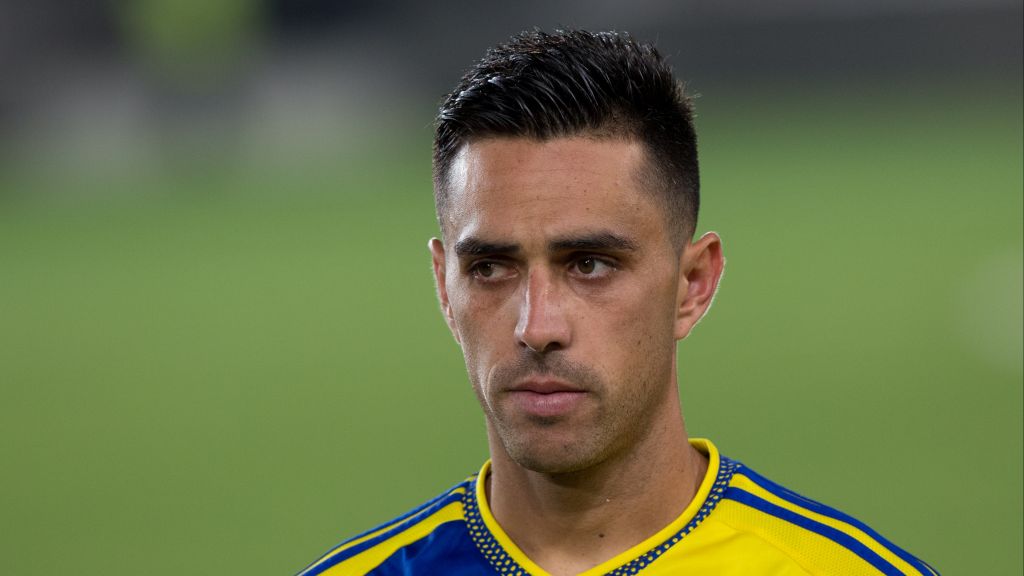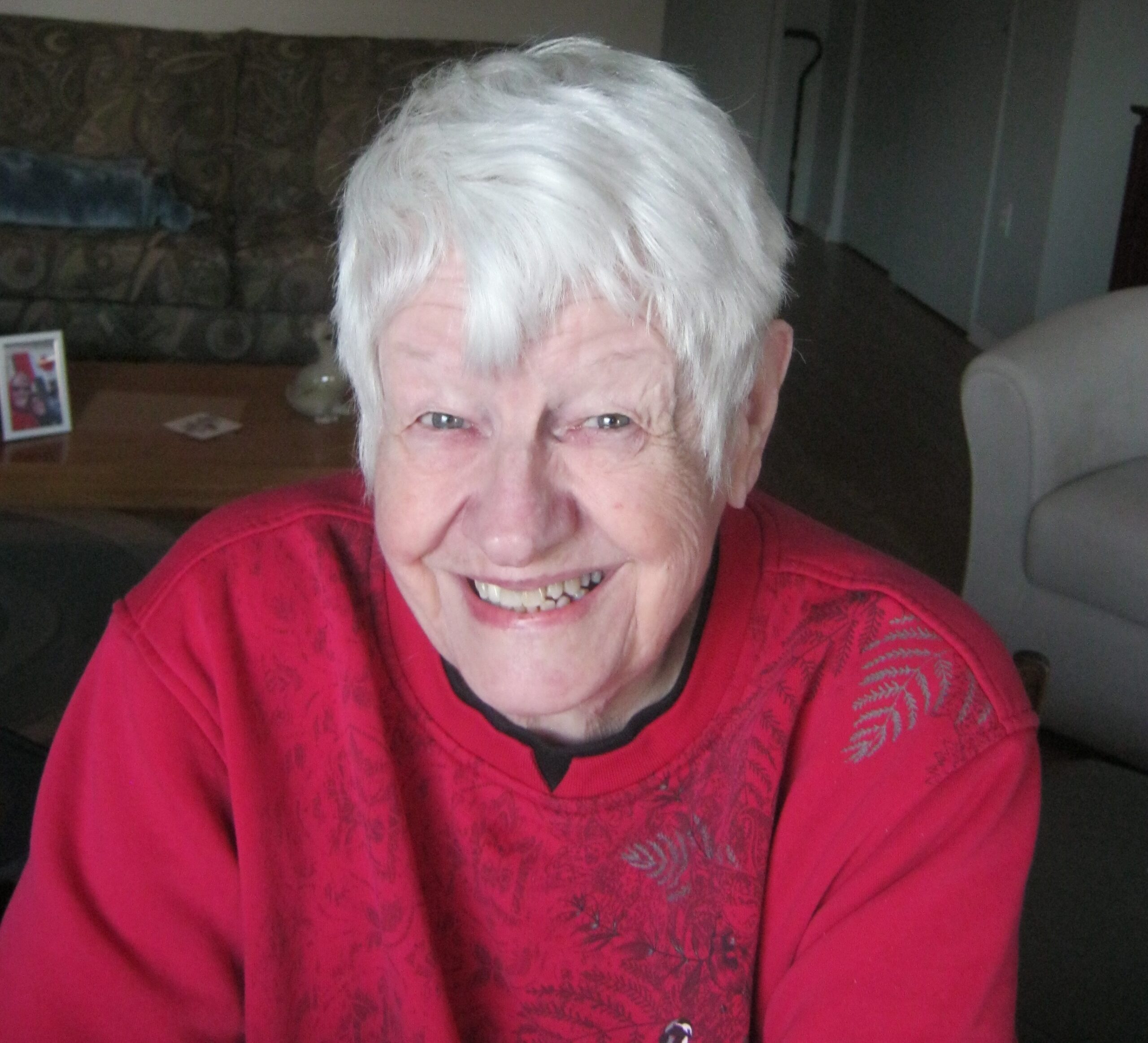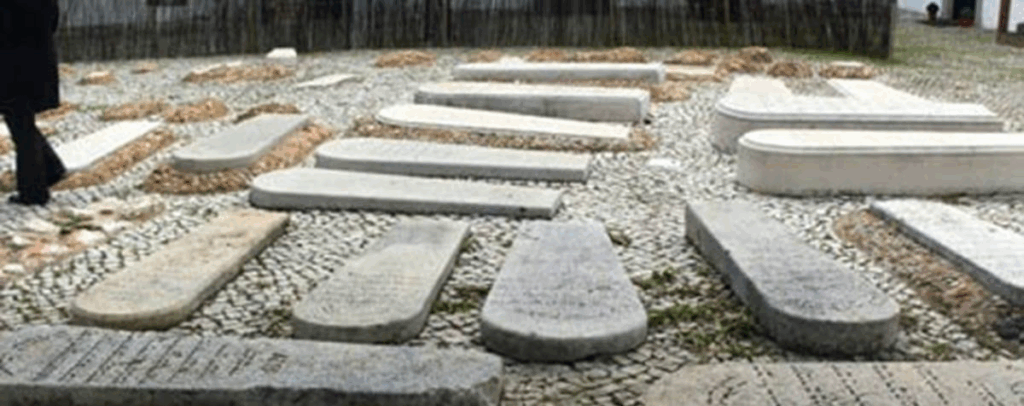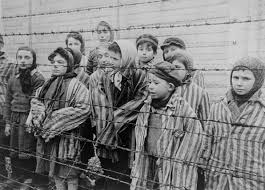Features
The Most Expensive Israeli Soccer Transfers

Even if Israel isn’t known as a world soccer power, it has produced plenty of talented players who have made a living in top European leagues. On more than one occasion, an Israeli international has commanded a rather large transfer fee. But who are the most expensive players in Israel’s history? The answer could be a little surprising. We took a look back to find the most expensive Israeli soccer transfers of all time.
Tai Baribo
In 2023, Baribo made the move to MLS, signing with the Philadelphia Union. The reported fee was around $1.5 million, which is one of the highest transfer fees the Union has ever paid for a player.
Omer Atzili
Throughout his career, Atzili has played for a variety of clubs, including stops in Spain and Greece. In 2023, he joined Al Ain in the UAE for a transfer fee of $2.1 million.
Maor Buzaglo
Now retired, Buzaglo was briefly the holder of the richest transfer deal for an Israeli player. After a couple of successful seasons on loan, Maccabi Tel Aviv paid $2.7 million to rival Maccabi Haifa for Buzaglo in 2008.
Dia Saba
Saba made history in 2020 when he joined Al-Nasr, making him the first Israeli player to play for a club in the UAE. At the time, it was a big deal for relations between the two countries. Al-Nasr also paid an impressive $2.9 million transfer fee for the midfielder.
Tal Ben Haim
On multiple occasions, Ben Haim has been sold for more than $1 million. First, there was his move from Hapoel Tel Aviv to Maccabi Tel Aviv in 2023 for close to $1.2 million. A few years later, Sparta Prague came calling for him, spending $3.1 million as a transfer fee for the winger.
Itay Shechter
During the prime of his career, Shechter was the type of player who warranted a seven-figure transfer fee. German club Kaiserslautern paid a little over $2.6 million in 2011 to bring Shechter to the Bundesliga from Hapoel Tel Aviv.
Daniel Peretz
When Peretz was sold to Bayern Munich, it wasn’t the most expensive deal involving an Israeli player, although it was arguably the most important. He became the first Israeli Jew to play at Bayern, which is one of the biggest clubs in the world. The transfer fee for Peretz paid by Bayern Munich to Maccabi Tel Aviv was around $5.4 million.
Oscar Gloukh
Gloukh is one of the best young Israeli players right now. He already has three international goals in a dozen appearances to his name. Somehow, Gloukh is already one of the most expensive players in Israel’s history. After coming up with Maccabi Tel Aviv, he moved to Austrian giant Red Bull Salzburg in 2023 for a transfer fee of close to $7.5 million. It wouldn’t be a surprise to see him top that number one day.
Liel Abada
Abada has been a part of two huge transfer deals in his young career. In 2021, Scottish club Celtic paid $4.8 million to acquire him from Maccabi Petah Tikva. However, that number was topped in 2024 when Charlotte FC of MLS paid a fee of $8 million for Abada.
With Charlotte FC, Abada competes in North America’s top league, facing teams from both Mexico and Canada. Throughout North America, sports betting has taken off in recent years. That includes betting in Canada, where there is a large collection of trusted sports betting platforms.
Eran Zahavi
To date, Zahavi holds the record for the most expensive transfer fee paid for an Israeli player. It’s fitting for Israel’s former captain and all-time leading scorer. In 2016, Chinese club Guangzhou City paid $12.5 million to get Zahavi from Maccabi Tel Aviv. That record was nearly broken later that year when another Chinese club offered $20 million for Zahavi, who turned it down and stayed with Guangzhou City.
Features
Winnipegger behind restoration of historic Jewish cemetery in Portugal

By MYRON LOVE The Butterfly Effect is roughly the idea that, metaphorically, great trees grow from small seeds or, to be more specific, the theory that tornadoes in North America may be triggered by a butterfly in Africa – or a seagull in the Atlantic – flapping its wings multiple times.
This story is an example of the Butterfly Effect in human terms. Roughly 40 years ago, a Winnipegger by the name of Bonnie Neil – she was known as Bonnie Griffith back then – happened to be visiting Portugal – in her role as program director of the old Hargrave YMHA’s Stay Young seniors group – and came across an abandoned Jewish cemetery in the south of the country. She mentioned the sorry state of the cemetery to a member of the small Jewish community in Lisbon. Now, that cemetery is a Jewish heritage site.
A social worker by training, she was hired by the Y in 1975 to work with teens. After a short time, she switched her focus to developing programming for older Jewish adults. “I founded the Stay Young Club,” recalls Neil (who isn’t Jewish). “When I started at the Y, there were no programs for older adults. I first proposed to Les Marks (who was then the Y’s executive director) the idea of programming for older adults and he gave me carte blanche to create programming.”
With funding from the Jewish Foundation and the Federal Government’s New Horizons program, Neil set to work. She began with a weekly gym and swim program, then added a weekly lunch, a Yiddish group, a choir and a light exercise group. Within a couple of years, the Stay Young Club was offering activities for older adults every week day.
The ambitious Neil then began going further afield. She began organizing short trips for Stay Young members, starting with Calgary and Edmonton, subsequently to Florida and Palm Springs. Looking even further afield, she took her charges to Israel three times –with assistance the first time from the well known Noach Witman (who operated Witman Travel in addition to hosting the Jewish Radio Hour). Subsequent Israeli trips were organized through Beth Shore at Flair Travel.
Les was always asking me where we were going to go next,” she remembers. “I had come across a little book listing places of Jewish interest. I noticed that Portugal wasn’t listed. We had been flying with CP Air -which flew to Portugal. I decided to go to Portugal to see for myself what might be of interest to Jewish travellers.
“As I knew nothing about the country, I asked a Jewish woman I met what there was in Portugal that might be of interest to Jewish travellers? She suggested I visit the southern city of Faro where there was a Jewish cemetery.”
Now some background: It is common knowledge (I think) that all Jews (except those who were willing to convert to Christianity) were expelled from Portugal in 1496 – four years after Jews were expelled from Spain. I hadn’t given much thought to what Jewish life in Portugal was like following the expulsion. According to information that Neil gave me, Portugal began allowing some Jews back into the country in the early 1800s. During World War II, the country became a haven for Jews fleeing Nazi persecution. Thousands of Jewish refugees found safety in Portugal. After the war, most left for other destinations. The Jewish population currently is about 900 – with two-thirds living in Lisbon, the capital.
(Ed. note: Portugal has become a prime destination for Israelis seeking to obtain citizenship in a different country, although without actually leaving Israel. According to the Times of Israel, over 60,000 Israelis have been granted Portugese citizenship, although only 569 had actually moved there as of September 2023. According to the TOI article, ‘The surge of Israeli applicants began after Portugal passed its “law of return” in 2015, allowing the descendants of Portuguese Sephardic Jews who were affected by the 16th-century Inquisition to apply for nationality. The Portuguese government has announced plans to end this policy in December 2023, saying its purpose of reparation will be ‘fulfilled.’ “
It sounds quite similar to the vast number of Lebanese who hold Canadian citizenship – between 40-75,000. It seems that Portugal and Canada offer attractive alternative destinations for Israelis on the one hand, and Lebanese on the other. If either group thought their lives were truly in peril, then they would have a safe place to where they could run, but in the meantime both Israelis and Lebanese seem content to stay where they are.)
In the 15th century, Faro had been a centre of Hebrew printing. The Jewish community began to be reconstituted in the 19th century. The cemetery was opened in 1820. In the 1860s, Jews from Morocco settled in the community – with some Russian and Polish Jews coming before World War I.

So Neil traveled to Portugal on an exploratory visit and asked her guide to show her the cemetery. She was horrified by what she saw.
“The last Jewish resident of Faro had died a year before,” she recalls. “When I arrived, the gates were locked. I could see that there was garbage and weeds everywhere. I also learned that the city was planning to tear down the cemetery to expand a sports field nearby. I let it be known that I was planning to bring a group of Jewish tourists and I got a promise that the cemetery would be cleaned up.”
During a stopover in Lisbon, she mentioned the cemetery’s deplorable condition. Then she went home. As it happened, the tour was cancelled due to a lack of registrants.
She says that she never gave Portugal another thought.
In 1985 she left the Y for government employment. “While I loved working at the Y,” she says, “I was a single mother by then with two children – and the government was offering a salary that was twice what the Y was paying.”
Recently, Neil learned what happened to the cemetery. It seems that shortly after she alerted the Jewish community in Lisbon, a community member by the name of Ike Bitton founded the Faro Cemetery Restoration Fund. The result of the fundraising effort resulted not only in the cemetery’s restoration, but also the opening a small Jewish museum containing a display of furniture from Faro’s synagogues.
Neil left government in 1992 to go into private practice in the social work field. She notes that she did some programming with seniors at the Simkin Centre. She retired in 2014. She still supports some Jewish institutions such as the Winnipeg Jewish Theatre.
Features
Famous Gambling Scandals and Controversies: Allyspin Casino Opinion

The gambling industry is full of scandals and controversies. There are various cases of fraud and manipulation schemes. That is why it is very important to pay attention to reliable gambling sites like Allyspin online casino, which follows the rules of responsible and safe gambling for its fans. Research shows that more than one trillion dollars are bet worldwide every year. That is why it is very important to be able to distinguish safe and reliable sites from fraudulent ones.
Casino Fraud and Money Laundering
Honest and secure gambling websites like Allyspin casino are careful not to fall victim to scammers. However, many sites are often targets for money laundering and fraud. Due to the large volume of transactions and cash flow, it is difficult to track all the directions of the flow of funds.
Among the largest scandals, the Crown Resorts in Australia stands out. An investigation showed that the casino was used to launder millions. Macau casino networks have also been involved in high-profile scandals. Thus, the region has faced close attention due to allegations of organized crime and laundering billions of dollars through betting. In addition, there are many money laundering cases in Las Vegas casinos.
There are many different methods of money laundering in online casinos. For example, fraudsters use chip dumping, cashing out winnings. Also, structuring is used by entering small amounts that are difficult to track over time.
Gambling Industry Reforms after Scandals
Sites like Allyspin casino do everything possible to prevent such scandals. Thus, the latest security measures and solutions are actively implemented:
Advanced fraud detection based on artificial intelligence. With the help of modern algorithms, monitoring of suspicious behavior when placing bets is simplified.
Strict identity verification protocols. Users need to confirm their identity before being able to withdraw funds.
Secure data using blockchain. Modern online casinos use cryptocurrency payments and blockchain in order to reduce the risks of unauthorized access to transactions.
Responsible gaming programs are also actively implemented. Online casinos offer the option of self-exclusion, as well as provide full support to players. All this allows you to minimize possible risks in the process of gambling and ensure the transparency of payment transactions.
The Future of Casino Security and Fraud Prevention
Large sites like Allyspin casino continue to expand, introducing enhanced security and fraud prevention tools. In the near future, such unique features will be available:
Fraud detection systems based on artificial intelligence and machine learning. Automation of processes helps to detect any fraudulent facts much faster compared to traditional methods.
Blockchain technology and cryptocurrency. Cryptocurrency payments help not only simplify payments for users, but also reduce the risks of unauthorized transactions.
Biometric and multi-factor authentication. Thus, users undergo unambiguous identification, which reduces the risk of account use by fraudsters.
Cybersecurity plays an important role in online casino gambling. Modern sites implement the latest mechanisms to combat fraud, ensure fair gaming process and fully protect honest players.
Features
Canada Is Failing Its Students on Holocaust Education — Here’s What Must Change

By EMILY (surname withheld by request) We received the following article from a third-year Health Sciences student at Western University, who wrote that as “a Jewish student, I have seen firsthand how Holocaust education in Canada is falling short and how that failure is contributing to fear, misinformation, and rising antisemitism on campuses like mine.”
Despite curriculum requirements, Holocaust education in Canada is alarmingly inadequate. A recent survey found that nearly one in five young Canadians believe the Holocaust has been exaggerated. This highlights a dangerous gap in historical understanding, leaving students vulnerable to misinformation, denial, and rising antisemitism. If Canada is serious about combating hate, it must take Holocaust education far more seriously.
When asked whether Holocaust education in Canada is lacking, Professor Hernan Tessler-Mabe, historian and coordinator of Jewish Studies at Huron University, did not hesitate: “You are 100 percent correct.”
While most provinces claim to include Holocaust education in their curricula, the programming and implementation of curriculum tends to be inconsistent and inadequate. A student’s understanding of one of history’s greatest atrocities depends heavily on where they go to school, which teacher they have, and whether their school offers substantive instruction. The result is misinformation, denial, and rising antisemitism.
Avoiding Holocaust education allows dangerous myths and conspiracy theories to spread unchecked. Without an understanding of the Holocaust and the centuries of antisemitism that preceded it, students are ill-equipped to identify modern antisemitism in the world around them. This antisemitism manifests into everyday conversation, online spaces, and political discourse.
To address this crisis, Canada must act with urgency in three key areas. These include consulting experts, confronting difficult material, and properly training educators.
First, schools and provincial governments must consult those who specialize in Holocaust history and education. “It is the most important thing,” Dr. Tesler-Mabé, Associate Professor and Coordinator of Jewish Studies at Huron University says. He points out, “You cannot just throw it into a general history class and assume it will be taught well. You need people who understand both the history and how to teach it.”
Second, we must accept that the subject is deeply disturbing and cannot be made comfortable. Dr. Tesler-Mabé iterates, “We have to accept that parts of this will be traumatic or triggering.” “Obviously it depends on grade level, but if students do not feel disturbed by it, they will not understand it. That discomfort is part of the learning.”
Third, teachers must be prepared. Many educators may feel unequipped to teach this material and either gloss over it or skip it altogether. Training programs and partnerships are essential. In Ottawa, the Centre for Holocaust Education and Scholarship (CHES) works to connect schools with survivor testimonies and support resources, but broader reach and investment are needed.
Dr. Tesler-Mabé explains, “We have to teach the teachers, especially now that we are losing survivors. That raises a whole new concern. How do you teach something this heavy, this complex, without first hand testimony? Educators need the tools, the background, and the sensitivity to do it well.”
Some may argue that Canada already does enough in this area. After all, Holocaust education is present in some curricula, and many students visit Holocaust museums or hear from survivors. But occasional exposure is not enough. The widespread prevalence of Holocaust denial and the proliferation of antisemitic conspiracy theories underscore significant shortcomings in current systems designed to combat such misinformation. A 2022 report by UNESCO and the United Nations, in collaboration with the World Jewish Congress, found that 16.2% of Holocaust-related content on major social media platforms either denied or distorted fundamental facts about the Holocaust. A standardized, rigorous, and mandatory approach is the only way forward.
Holocaust education is not just about history, it is about safeguarding the future and combating antisemitism in modern manifestations. When students understand how propaganda, scapegoating, and dehumanization led to one of history’s darkest chapters, they are better equipped to recognize and reject hatred in all its forms. Without a solid foundation in Holocaust education, antisemitism continues to fester, not just in online spaces, but within universities, workplaces, and public discourse. We are already seeing the consequences of unchecked Holocaust denial and rising antisemitism, from bias in professional spaces to hostility on university campuses. As a Jewish student at Western University, I have seen fear take hold among my peers. Friends who once wore Stars of David or spoke openly about their heritage now hesitate to do so. I have also begun to question whether it is safe to express my identity. With the last generation of Holocaust survivors passing, the responsibility to preserve their stories and the lessons they teach rests with all of us. If we do not confront this crisis at its root, we risk allowing history to repeat itself in new and dangerous ways.
Canada is failing its students. In doing so, it is failing the promise of Never Again. The question is not whether we should strengthen Holocaust education, but why we have not already.

You must be logged in to post a comment Login